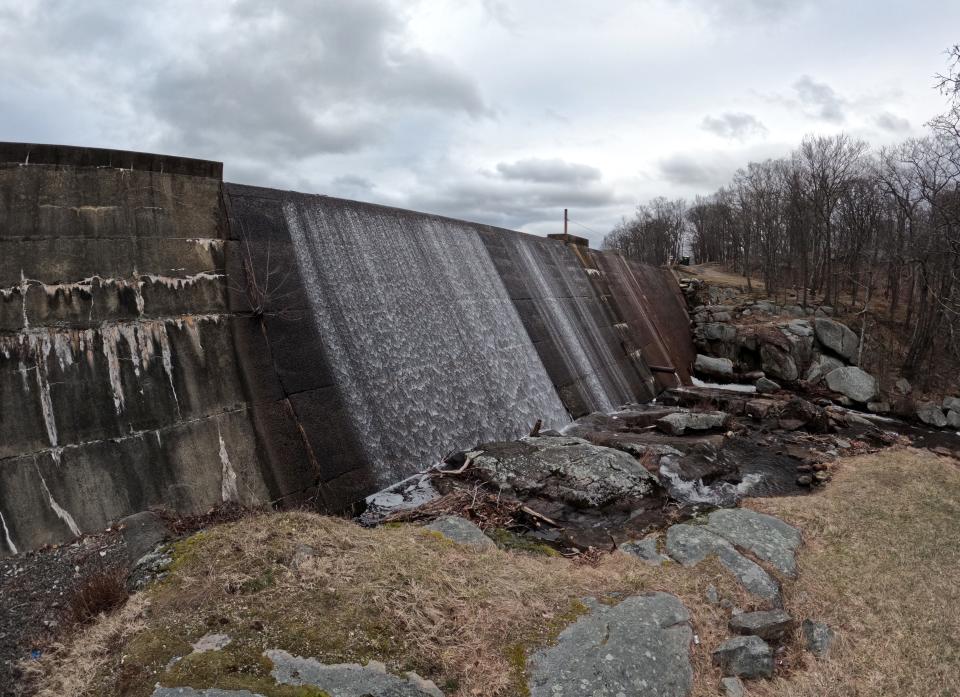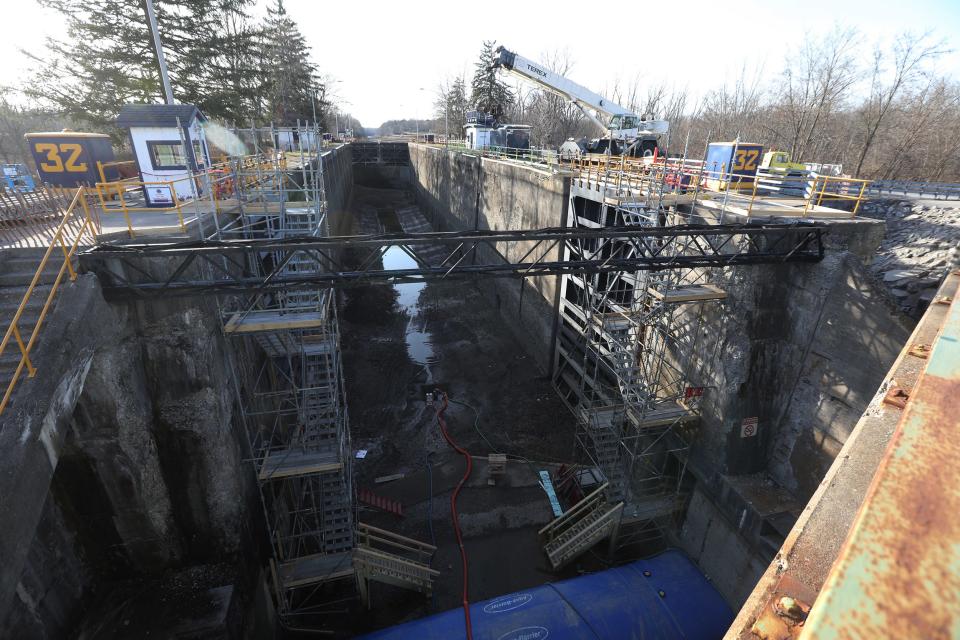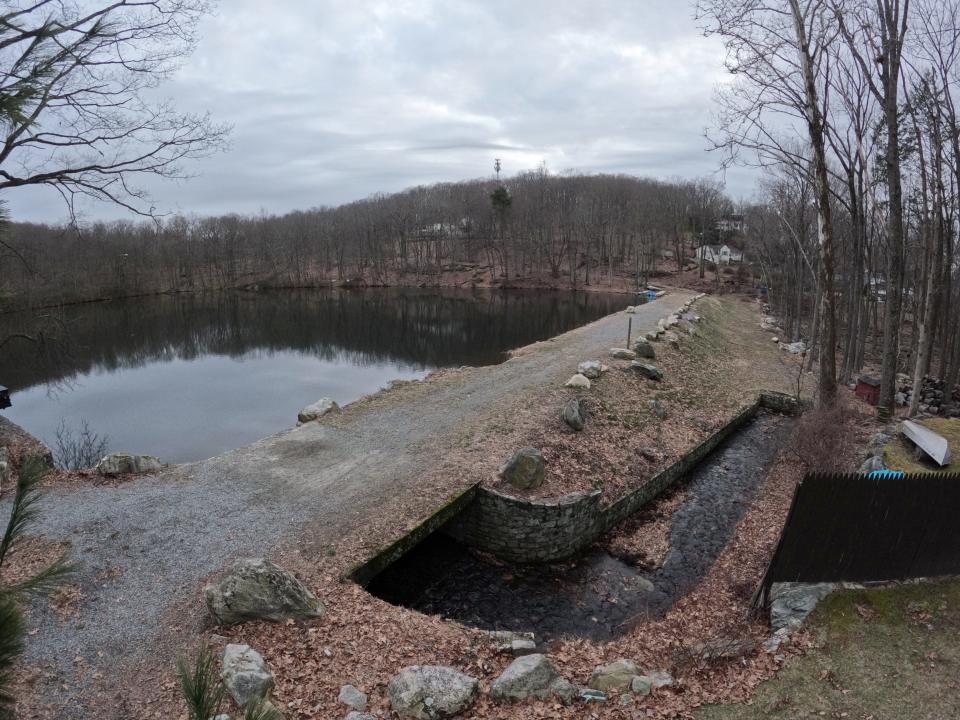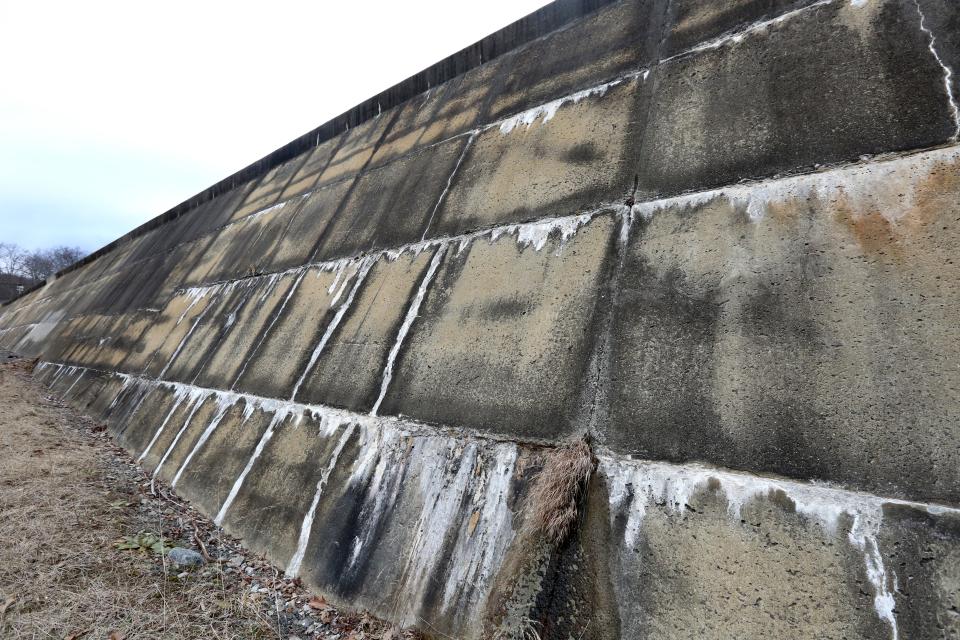Nearly 100 dams in NY in bad condition, would cause harm if compromised. Where are they?
Over 90 of New York's high hazard dams are in poor condition, with dams in three Hudson Valley counties exhibiting some of the worst numbers in New York.
Of the state's 1,920 dams, 438 of them are classified as having a "high hazard" potential, which indicates that a failure of the dam or its facilities could cause severe economic damage or loss of human life in the downstream area, according to data compiled in the U.S. Army Corps of Engineers' National Inventory of Dams.
Ninety-three of them are also in poor condition.
Here's a look at how the data breaks down and which counties currently have the most low-quality dams.

What the NY data shows
Ninety-three state dams fall into both categories of having a high-hazard potential and being in poor condition.
And there may be more of those questionable dams out there.
The conditions of almost 70 other dams with high hazard potentials have either been left blank or are listed as "not rated" or "not available." And an additional seven dams have an undetermined hazard potential.
View a map of the 93 high hazard-poor condition dams across the state below.
Also, most of the state's dams are almost a century old, with the average age coming in at 86 years.
For those that fell at the intersection of high hazard potential and poor condition and included data on their age, around 23% were finished in the 1800s, 17% in the 1920s and 15% in the 1910s.
Below is a database of all the dams across New York — where they're located, how old they are and when their quality was last evaluated (if that information is available.)
NY counties that have most high hazard-poor condition dams
Five counties — Westchester, Orange, Chenango, Rockland and Fulton — have over 30% of the state's high hazard dams in poor condition.
Here's a list of those dams:
Westchester County
Minkel Dam in Ossining
Westchester Lake Dam in Annsville
Mamaroneck Reservoir Dam in Mamaroneck
Lake Lincolndale Dam in Lincolndale
New Rochelle Reservoir #1 Dam in Eastchester
Larchmont Water Company Dam #2 in Mamaroneck
Tarrytown Waterworks Dam in Elmsford
Croton Road Dam and Dike in Ossining
Still Lake Dam in Briarcliff Manor
Byram Lake Reservoir Dam in Armonk
Swan Lake Dam in North Tarrytown
Blind Brook Club Dam in Rye

Orange County
Popolopen Lake in Highlands
Lake Frederick in Central Valley/Woodbury
YMCA Camp McAlister Dam in Huguenot
Willow Brook Dam in Bull Mine
Goshen Reservoir #1 Dam in Goshen
Lake Cohasset Upper Dam in Arden
Lusk Reservoir in Highland Falls
Chenango County
Mill Brook Site 2 Dam in New Berlin
Genegantslet Lake Dam in McDonough
Norwich Reservoir #1 Dam in Hawley Corners
Norwich Reservoir #2 Dam in Hawley Corners
Long Pond Dam in Smithville
Guilford Lake Dam in Guilford
Rockland County
Pine Grove Lake Dam in Sloatsburg
First Reservoir Dam in Thiells
Lake Suzanne Dam in Spring Valley
Lake Welch Dam in Willow Grove
Lake Sebago Dam in Sloatsburg

Fulton County
Ephratah Dam in Ephratah
Port Creek Reservoir Dam in Riceville
Peck Lake Dam in Gloversville
Inghams Dam in Ingham Mills
Rockwood Power Dam in Rockville
NY redistricting: NY Dems adopt new redistricting map with no threat of GOP lawsuit, ending 3-year saga
How NY is addressing its high hazard dams
According to the National Inventory of Dams, dams are inspected anywhere between once a year and once every five years.
But the New York State Department of Environmental Conservation says it inspects high hazard dams every two years with the exception of certain ones, like those regulated or owned by the federal government.

In August 2023, the Guilford Lake Dam in Chenango, along with eight other dam projects, received $766,000 in funding through the Federal Emergency Management Agency's High Hazard Potential Dam Grant Program to "support planning, design, and other pre-construction activities to rehabilitate 'high hazard' dams."
The DEC also received funding through FEMA's grant program in 2019 and 2020.
"DEC is continually working to enhance our highly effective dam safety program and assess the condition of dams throughout the state to help keep the public safe," a DEC representative said in a written statement Thursday.
"Our staff immediately addresses any urgent conditions that are identified, remain on call every day of the year to respond to any potential concerns resulting from storms or other damaging impacts, and conduct diligent inspections of private, public, and State-regulated dams to help identify and prevent issues before they occur, and take enforcement action as necessary."
Emily Barnes is the New York State Team consumer advocate reporter for the USA TODAY Network. Contact Barnes at ebarnes@gannett.com or on Twitter @byemilybarnes.
This article originally appeared on Rochester Democrat and Chronicle: Where are NY's worst dams? 93 'high hazard' dams in poor condition

